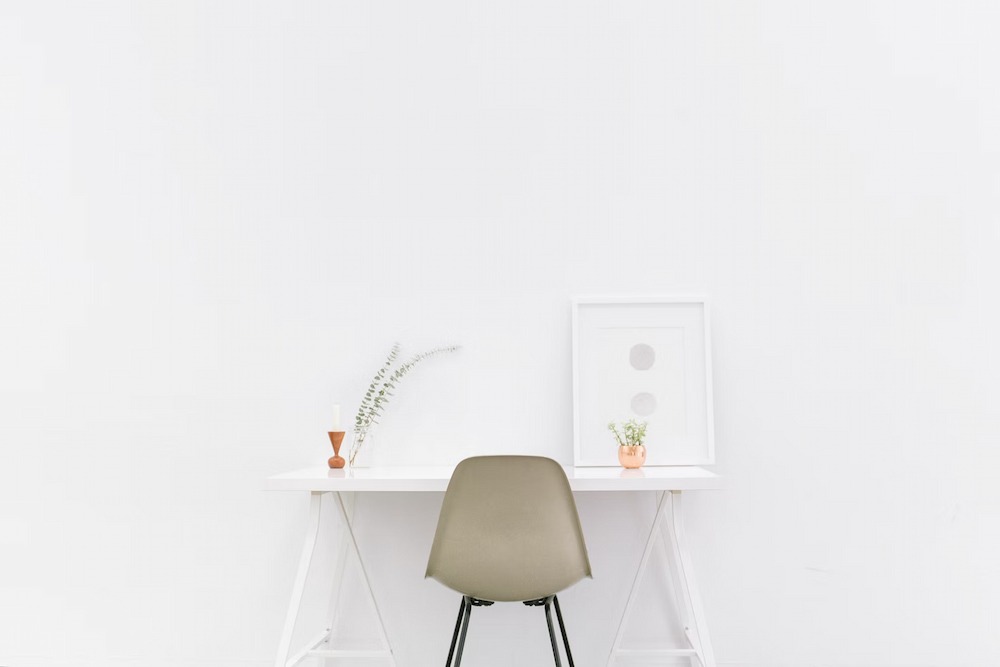5 Simple Steps to Start Becoming a Minimalist Today

In today’s world, minimalism is a hotly debated term often used synonymously with a swarm of buzzwords and phrases.
Tiny houses, decluttering, “less is more” and “sparks joy” are a few of the terms you may be familiar with. Although rooted in various philosophies, these phrases have had a recent resurgence largely thanks to Marie Kondo and her KonMari movement.
But do these terms really define what minimalism is? And, if they do, how does one simply decide to become a minimalist overnight?
Keep reading as we explore what it means to be a minimalist and define the principles of a minimalist lifestyle. We will also provide our own step-by-step guide filled with a variety of tips to help you on your journey to becoming a minimalist.
What is Minimalism?
Well, it depends on who you ask.
Brush off your dusty encyclopedia, flip to “M” and entries surrounding artistic movements of the 1960s will likely be revealed.
Ask Joshua Fields Millburn and Ryan Nicodemus, co-founders of The Minimalists, and you will get a completely different answer. The pair may explain to you how the term refers to “a tool [used] to rid yourself of life’s excess in favor of focusing on what’s important.”
Ask Jia Tolentino, a staff writer for The New Yorker and the author of “The Pitfalls and the Potential of the New Minimalism,” and she, too, will define the term differently. For example, her article concludes that new minimalism is simply an attractive distraction en route to a more necessary societal correction rooted in sustainable practices.
Watch Marie Kondo in her Netflix show, Tidying Up, and you might find yourself even more confused. Why is someone who defines minimalism as “less is more” trying to get you to buy a $220 Copper Birdhouse?*
After this whirlwind of different perspectives, you probably find yourself asking (at least) one question.
“Who is right?”
The answer: everyone. To a point.
*The link included here is so you can see the irony for yourself. Please don’t buy the birdhouse. Here are some birdhouse-buying tips from the National Wildlife Federation if you’re in the market for an avian dwelling.
Is Becoming a Minimalist Worth It?
It’s true that minimalism is rooted in the artistic movements of the 1960s as well as distant philosophies of Shinto, Buddhism, and others.
It’s also true that new minimalism is often embraced by Americans as a means to rid themselves of excessive purchases and improve their relationship with the world they live in.
However, what each of these approaches seems to ignore is that minimalism can mean a variety of things to a variety of people. The continued popularity of tiny living, Marie Kondo and downsizing even points to the fact that minimalism is now a pursuit explored by a variety of people from a variety of backgrounds.
So, in short, yes. Becoming a minimalist is worth it if you stay true to your own intentions and aspirations.
How to Become a Minimalist Step by Step
If you’re thinking of becoming a minimalist, here’s our guide to getting the most out of this purposeful lifestyle and how to make it work for your needs:
1. Defining What Minimalism Means to You
According to multiple sources, the first step in carving out a minimalistic lifestyle is to define what minimalism means to you.
Is it a tool to declutter your home of excess possessions?
Or is it more of a lifestyle, a change in the way you interact with various scenarios?
You may even find yourself longing for something in the middle.
For some people, their idea of minimalism might look different across various scenarios and spaces. For example, they may enjoy working in a messy office that reminds them of all the work they need to do and then clocking out to return to a tidy and organized home.
A few questions to keep in mind when determining the “rules” of your minimalism are:
- How do my priorities reflect my values?
- How do my daily habits help me strive for my priorities?
- What does a productive relationship with social media look like for me?
- What does a productive relationship with material things look like for me?
- What are my motivations for “becoming” a minimalist?
2. Explore the Benefits of Minimalist Living
After you determine exactly what minimalism means to you, you should take time to explore the many benefits of minimalism. It is a good idea to help qualify your expectations and build a realistic timeline for when you can expect to achieve such results. In general, the following are the most-cited benefits associated with switching to a minimalistic lifestyle:
- Increased Savings. Theoretically, if you are buying and using less, then you should be able to save more money. Of course, you may then decide to use these savings to fund a longer or more exotic vacation, but at the very least, by buying less you will be able to better utilize your savings to fund higher-quality experiences.
- More Time. Now that you have fewer possessions to take care of, you should also be able to spend less time on maintenance and upkeep. You can use this extra time to explore more of your passions and focus on living a more fulfilled life.
- Less Stress. Everything you own requires a certain level of attention, and subsequently, a certain level of anxiety since you must take care of these possessions. With fewer possessions to take care of, you should notice yourself dealing with less anxiety and an overall decrease in stress.
- Reduced Consumption. Your reduced consumption is not only good for your own well-being but also for the environment. By buying less, you’ll also be able to lower your ecological footprint and use less nonrenewable resources.
3. Start Living Your New Lifestyle
Once you have a good grasp on what you want to get out of adopting a minimalist lifestyle, it’s time to start implementing your newfound guidelines into your everyday life. You can start by listing out the various principles you want to adopt. For example, a sample list might look like this:
- Create a monthly budget and stick to it.
- Spend less than 2 hours on my phone per day.
- Declutter my home and sell or donate unnecessary items.
- Plan out a weekly meal schedule and only purchase groceries week to week.
As you continue to work toward these goals, you may find yourself adopting other guidelines to further adopt a minimalistic lifestyle. You may also find it necessary to make changes to the guidelines you establish as you move through life.
4. Make Changes As & When You See Fit
After you start becoming a minimalist, you might find your principles to be unrealistic or even unnecessary. Remember, minimalism is what you make of it. If after a month or two of purchasing groceries week-to-week you realize you prefer to shop for two or three weeks at a time, you should allow yourself to do so. There is nothing wrong with changing your expectations and goals as you learn more about what works for you.
If you do make changes to your goals, make sure to tailor the rest of your goals to fit this one change. For example, if you start purchasing groceries in bulk, you may need to change the goals you set for your budget.
If your version of minimalism involves big changes like downsizing your home or building a tiny house, you should make sure to spend a good amount of time brainstorming the potential problems you could encounter with such a change. In this scenario, it might also be a good idea to test out living in a tiny house by renting one on Airbnb before you make the decision to build your own. Make sure the changes you make are not irreversible until you are positive that’s what you want out of life.
5. Give Yourself Time
While trying to adopt a minimalistic lifestyle you need to make sure you’re giving yourself time to make changes. A good way to do this is to adopt the 21/90 rule. The rule is a popular method used to establish habits.
Start by committing to your goal or completing a specific task for 21 days straight to establish this behavior as a habit. Next, continue to complete the task or pursue your goal for an additional 90 days. After completing the 21/90 regimen, your new pursuit should become a permanent lifestyle change.
Of course, some tasks are better suited for the 21/90 rule. For example, meditating for 15 minutes a day could work very well using the rule. However, downsizing your home and possessions probably isn’t a task you need to realistically complete daily.
FAQs
Q: How long does it take to become a minimalist?
A: If you’re looking to transition into a completely minimalist lifestyle, it may take up to 1 or 2 years. However, it’s important to remember that minimalism shouldn’t be a race. You should move at your own pace whether you’re looking to use minimalism as a means to change your perspective on life or downsize your home.
Q: What makes a person a minimalist?
A: The most common qualities associated with minimalists are organization, purposeful purchasing and dedication to meaningful relationships and activities rather than the ownership of material items.
How to Become a Minimalist Your Way
While minimalism is a worthy pursuit for those seeking to live clutter-free, it’s also important to learn how to be at peace with the stuff you own.
Even if you’re looking to downsize your home or build a tiny house, you shouldn’t get rid of all your possessions at once. Hopefully, this article has taught you more about the benefits of minimalism and taught you that minimalism is no longer a hard and fast discipline only for those who own less than 50 possessions.
Storage can also play an important role in your journey to becoming a minimalist. A secure storage unit can serve as a temporary home for your possessions while you downsize or as a more permanent space dedicated to storing bulky or seasonal items.
Store Space is dedicated to providing affordable storage solutions across the United States. Use our storage location finder to find the closest Store Space facility to you!






